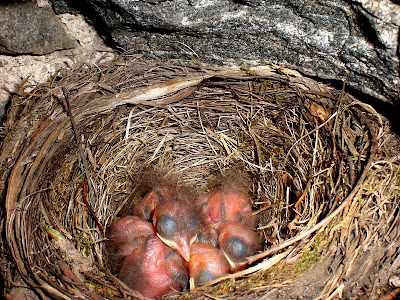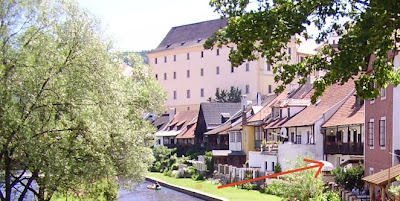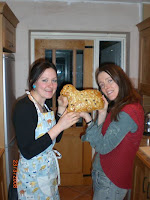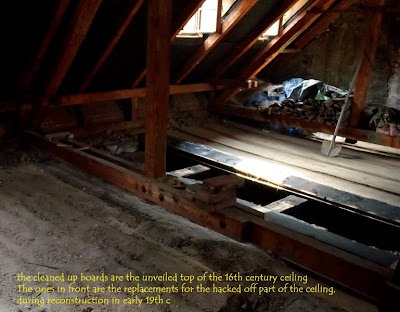 Our poor garden at the Lake house is turning into a nightmarish rut-riven battlefield image. Hopefully to good end, only right now I wish we never have started. Unfortunately in this particular location we have to have the tank as the high level of ground water and no real slope mean no lovely ecological run of ponds with shit-eating plants etc etc; that's not allowed - just a plastic underground monster for the loos. But at least our waste water and rainwater, and some ground-drainage, are going into a semblance of an ecological pond in the form of a large soakaway at the bottom of the garden, though I am not sure how effective this whole system can be given the clay base to the grounds and the high ground-water level even in the Summer that has nowhere else to go. But that's how my project engineer designed it - I told him if it doesn't all work he'll be inside the tank.
Our poor garden at the Lake house is turning into a nightmarish rut-riven battlefield image. Hopefully to good end, only right now I wish we never have started. Unfortunately in this particular location we have to have the tank as the high level of ground water and no real slope mean no lovely ecological run of ponds with shit-eating plants etc etc; that's not allowed - just a plastic underground monster for the loos. But at least our waste water and rainwater, and some ground-drainage, are going into a semblance of an ecological pond in the form of a large soakaway at the bottom of the garden, though I am not sure how effective this whole system can be given the clay base to the grounds and the high ground-water level even in the Summer that has nowhere else to go. But that's how my project engineer designed it - I told him if it doesn't all work he'll be inside the tank. Oh well, so the digger went to work scooping loads of absolutely lovely, clean clay. I wish I was a ceramicist because the clay is SO perfect I could easily imagine someone making tiles or bricks out of it, or insulating ponds that WOULD work! Here is a view of the fabulous layers as they revealed themselves: you can just see the grey clay under the black clay, even though the water is fast reaching up to its 'norm' which is at the top of the black layer.
Oh well, so the digger went to work scooping loads of absolutely lovely, clean clay. I wish I was a ceramicist because the clay is SO perfect I could easily imagine someone making tiles or bricks out of it, or insulating ponds that WOULD work! Here is a view of the fabulous layers as they revealed themselves: you can just see the grey clay under the black clay, even though the water is fast reaching up to its 'norm' which is at the top of the black layer. The next stage was the digger bringing stones to fill the bottom, at which point it stuck, because the rest of the garden, with its wet underlay despite a month of no rain, wouldn't take its weight with the stones in its jaw, and the wheels just sunk about half a meter down. I don't have a picture of it, too depressing.
The next stage was the digger bringing stones to fill the bottom, at which point it stuck, because the rest of the garden, with its wet underlay despite a month of no rain, wouldn't take its weight with the stones in its jaw, and the wheels just sunk about half a meter down. I don't have a picture of it, too depressing.The digger's still sitting there - and the project engineer and I are scratching our heads what to do next.
And I am quietly counting money in my head, feeling it drain away like that water.
These are the moments when one wishes one's never started. But I am sure when all this is over and done with and the garden healed again, I will look back and laugh. I suppose it was funny seeing the mighty digger monster totally helpless stuck in the mud, after all.














I read the comment of Luboš Jedlička in the newspaper that you quote, which I repost for the Czech to light up more... I cannot believe it, he really said it:
„S investorem jsem diskutoval možnost úpravy ostrova a jeho stabilizaci. V úvahu by mohlo přijít vymodelování ostrova do stabilního hydrodynamického tvaru podobně, jako jsou konstruována křídla letadel. Ve stávající podobě není možné ostrov zachovat,“ konstatoval v úterý starosta Luboš Jedlička